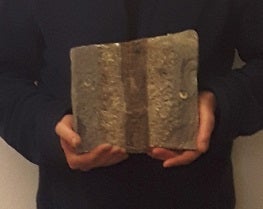Where does this story come from?
Marine geologist Simon Troelstra, former associate professor and now, after his retirement, guest lecturer and researcher at the Faculty of Science (Vrije Universiteit Amsterdam), is concerned. What will happen to the valuable material that he collected during an expedition in the 1980s – and which is currently stored in a refrigeration unit in the FNWI building? And what will soon be happening to the samples from more recent expeditions? In the 1980s, Troelstra took part in the Indonesian-Dutch Snellius-II Expedition 1984-1985. During this time, he collected a large number of drilling cores: long cores of sediment drilled from the ocean floor. These cores contain a wealth of data.
Not recorded anywhere
So what’s the problem now? Simon Troelstra is one of the few people who still knows that these valuable data (the drilling cores) are still held in the basement of Earth Sciences in the FNWI building, and also where the cores originated! This material is not recorded in any official databases accessible to other scientists. To make things even worse, Earth Sciences will soon be moving to a new building. So, what will happen to the collections?
Still useable and relevant
So if researchers don’t know that the drilling cores are in the cellar of this VU Amsterdam building, they won’t find them either. That would be a huge waste of resources, because the data are still useable and also relevant to research, for instance on climate change or acidification of the oceans.
Recommending a central national overview of drilling core collections
Simon has already recommended the creation of a central national overview of drilling core collections at institutes and universities, but unfortunately, this has brought no benefits for the VU Amsterdam material.
Two years from now, the Geology department of Earth Sciences will be moving to a new VU Amsterdam building. It is currently still unclear whether the physical collections can once more be stored in the new building. So it would be good if a decision on the fate of this unique material can be taken as soon as possible.
Simon Troelstra's Story on YouTube - In Dutch
The stories for the Data Horror Week 2020 were collected by the Research Data Management (RDM) Support Desk at Vrije Universiteit Amsterdam.

